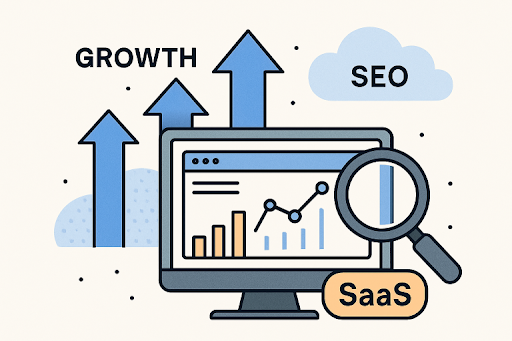Cloud computing has gradually become a cornerstone of modern technology, reshaping how individuals and businesses access, store, and manage data. Its rise brings with it many exciting opportunities, but also some challenges that are important to consider. Let’s gently explore the top advantages and disadvantages of cloud computing, helping you better understand this powerful tool in today’s digital landscape.
What is Cloud Computing?
Cloud computing is a way of storing and accessing data and applications over the internet instead of using your computer’s local hard drive. In simple terms, it allows you to use powerful computing resources like servers, storage, software, and databases that are hosted remotely, often in large data centers run by companies such as Amazon Web Services (AWS), Microsoft Azure, or Google Cloud. When you use cloud computing, you’re not limited to one device or location. Whether you’re working from a laptop at home, a smartphone on the go, or a desktop in an office, you can access your files and tools as long as you’re connected to the internet. This approach eliminates the need to buy and maintain physical hardware or install software on every device. Instead, you can use what you need, when you need it, and pay only for what you use. It’s a flexible, cost-effective solution that supports everything from personal storage to running large-scale business operations.
Advantages of Cloud Computing
- Accessibility from Anywhere
One of the most wonderful things about Disadvantages of Cloud Computing cloud computing is the freedom it gives you. Your files and applications aren’t tied down to a single device. Instead, they live safely in the cloud, accessible from any device with an internet connection. This means you can work, study, or collaborate from home, a café, or even while traveling, making life a bit more flexible and convenient. - Cost-Effective Solutions
Cloud computing helps reduce the need for expensive hardware and on-site IT infrastructure. Instead of investing large sums up front, you can use a pay-as-you-go model, where you pay only for the resources you actually use. This approach is particularly helpful for small businesses or startups aiming to keep their budgets manageable while still leveraging advanced technology. - Scalability and Flexibility
Whether your business suddenly experiences a surge in customers or your personal projects grow larger, cloud services can easily scale to meet your needs. You don’t have to worry about running out of storage or processing power because the cloud provider adjusts resources dynamically to keep things running smoothly. - Reduced Maintenance Burden
with Disadvantages of Cloud Computing cloud computing, much of the behind-the-scenes maintenance like installing updates, patching security vulnerabilities, and managing hardware is handled by the service provider. This reduces stress on you or your IT team and ensures your system is always up-to-date with the latest improvements. - Enhanced Security Measures
Security is a top priority for reputable cloud providers. They invest heavily in encryption, multi-factor authentication, and round-the-clock monitoring to protect your data. While no system is completely immune to threats, cloud platforms often offer levels of security that can be hard to match with traditional on-premises solutions. - Collaboration Made Easy
Cloud computing fosters seamless collaboration by allowing multiple users to work on documents, spreadsheets, and projects simultaneously. No matter where team members are located, the cloud keeps everyone connected and updated in real time. - Disaster Recovery and Data Backup
Cloud providers usually offer built-in backup and disaster recovery options, ensuring that your data isn’t lost even if your local device fails. This safety net brings peace of mind, knowing that your important files are stored securely and can be recovered when needed. - Environmental Friendliness
By optimizing server use and enabling remote work, cloud computing can reduce the overall carbon footprint compared to traditional IT setups. Sharing computing resources leads to better energy efficiency, contributing positively to environmental sustainability. - Rapid Deployment
With cloud computing, setting up new applications or services is often faster than traditional methods. Instead of waiting for hardware to be installed or configured, cloud services can be ready to use in minutes, helping you get projects started without delay. - Innovation at Your Fingertips
Cloud platforms often offer a wide range of tools and services like artificial intelligence, big data analytics, and machine learning making it easier for businesses and individuals to experiment and innovate without large upfront investments.
Disadvantages of Cloud Computing
- Dependence on Internet Connectivity
Cloud computing relies heavily on a stable and fast internet connection. Without it, accessing your files or applications can become difficult or impossible, which can interrupt work or cause frustration. - Privacy and Data Control Concerns
storing sensitive information on third-party servers means entrusting your data to cloud providers. This can raise privacy concerns, especially for businesses dealing with confidential or regulated information. - Potentially Rising Costs Over Time
while the pay-as-you-go model is initially budget-friendly, costs can accumulate if you don’t monitor usage carefully. Unexpected spikes in resource consumption can lead to higher monthly bills than anticipated. - Limited Control over Infrastructure
Using cloud services means you give up some control over your computing environment. The provider manages most infrastructure decisions, which can be a disadvantage if you require highly customized setups. - Data Transfer Speeds and Latency
Uploading and downloading large amounts of data to the disadvantages of cloud can be slow, depending on your internet speed. This latency can be a drawback when working with big files or real-time applications. - Complexity in Migration
Moving existing systems and data to the cloud can be complicated. The process requires planning and care to avoid downtime or data loss, which might necessitate professional help. - Risk of Vendor Lock-In
once you commit to a particular cloud provider, switching to another can be challenging due to proprietary technologies or contractual terms. This lock-in might limit flexibility in the future. - Learning Curve for New Users
Cloud platforms offers many features and options, which can feel overwhelming at first. Adapting to new tools and interfaces may require training and patience, especially for those accustomed to traditional systems. - Security Risks remain
although disadvantages of cloud providers invest heavily in security, no system is completely invulnerable. Cyber attacks, data breaches, or accidental leaks remain potential risks, meaning users must still practice good security habits. - Compliance and Legal Challenges
Depending on your location or industry, cloud storage may raise compliance issues related to data sovereignty and regulations. Navigating these legal requirements can be complex and requires careful consideration.
Conclusion
Cloud computing opens up many exciting possibilities with its flexibility, convenience and power. At the same time, it’s important to be aware of its limitations and challenges so you can make informed decisions that fit your unique needs. By balancing the advantages and Advantages and Disadvantages of Cloud Computing thoughtfully, you can harness the cloud to simplify your digital life or boost your business in a safe and effective way.











